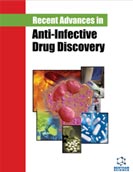Abstract
Passing to the era of molecular imaging and precision oncology, the
radiopharmaceuticals may play an incremental role in further revealing the nature of
the evaluated lesion. FLT, a radiolabeled thymidine analogue, and FCH, a radiolabeled
substance of the cell membrane phospholipids, have been more or less investigated in
the imaging, identification, and evaluation of brain tumor lesions. In our study, using a
Siemens Biograph LSO PET/CT 16 slices device, a Siemens multimodality workplace
(MMWP) system for brain analysis, and qualitative and semiquantitative analysis
(SUVmax, SUVpeak, T/B ratio), we investigated the role of these two
radiopharmaceuticals in primary and metastatic brain lesions, lymphomas as well as in
investigating neurological symptoms with inconclusive/indefinite evidence in the
conducted MRI. Using F-18-CH for PET/CT imaging, we found that there was FCH
uptake by active tumor sites, with no statistical significance in SUVmax, SUVpeak and
T/B ratio for the discrimination of the lesions between primary, metastatic and
lymphomas, (p > 0.05). However, recurrent primary lesions exhibited lower T/B and
SUVmax compared to the respective mean values of the metastatic ones. With the
utilization of F-18-FLT we concluded that it could discriminate between active from
non-active foci, while mean values of T/B and SUVmax were statistically significantly
higher for NHL compared to primary and metastatic tumors (p<0,001). There was a
tendency for significance for SUVmax and T/B between low and high-grade recurrent
primary tumors (p=0.08 and p=0.06, respectively) when excluding the outliers.
However, further investigation is required for definite conclusions.
Keywords: Brain Lesion, Brain Tumor, FCH, FLT, PET/CT.






















